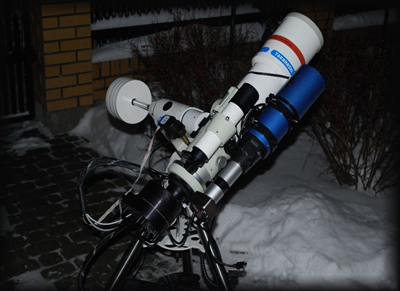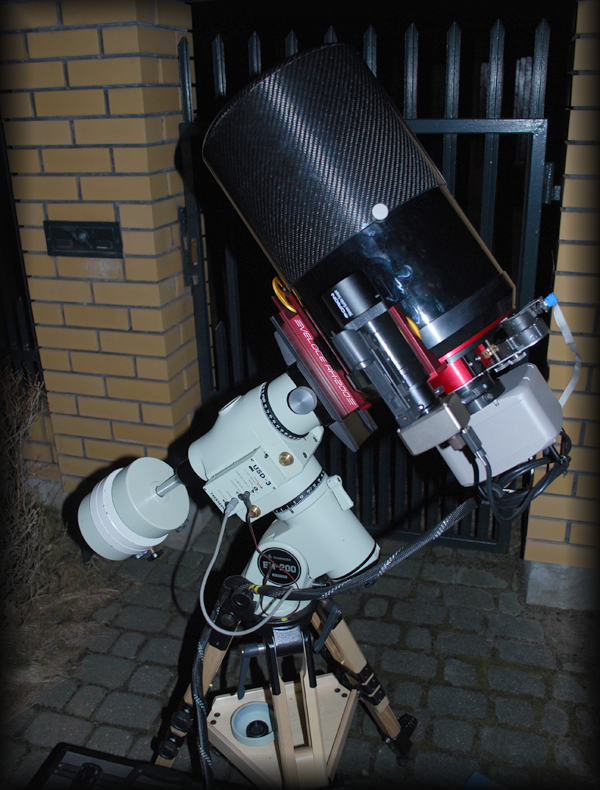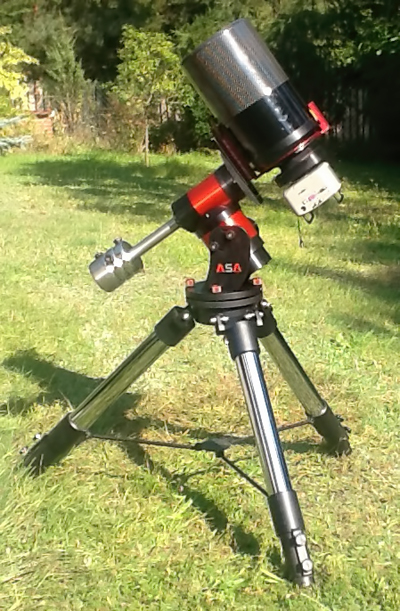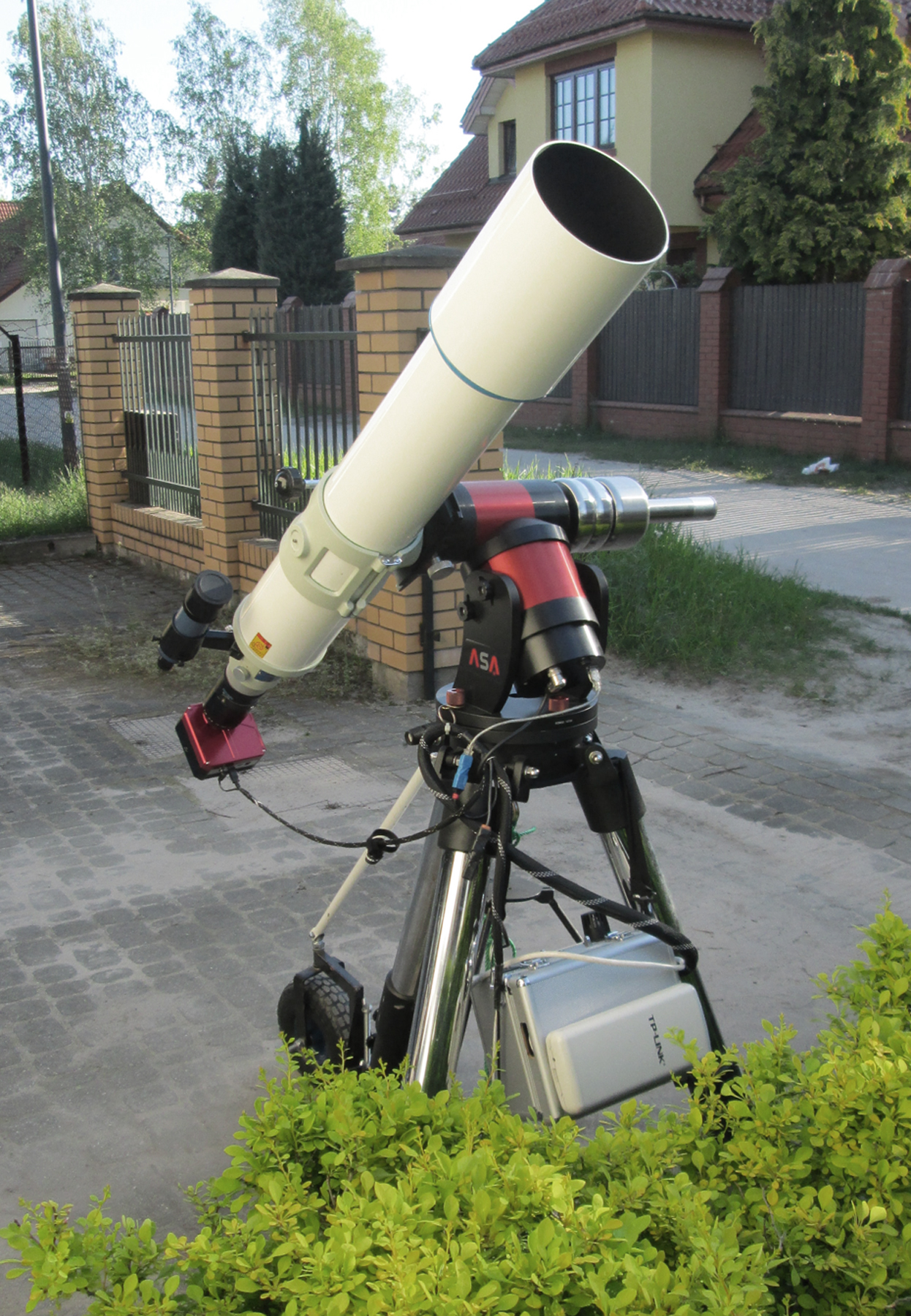| |
|
|
 |
|
My first real set for astrophotography (2008-2011)
Astrograph: Takahashi FSQ 106N
Camera: Santa Barbara Instruments Group ST-2000 XM
Guider: SkyWatcher 80/400 with a camera SBIG Remote Guide Head
Filter wheel SBIG CFW-10 with a set of filters: LRGB, Ha, SII, OIII by Baader Planetarium, plus Pro Planet 742 for planetary photography.
Mount: HEQ 5 Pro SynScan.
FOV 1.28o x 0.96o , resolution 2.88 arcsec/pixel
I am using Takahashi FSQ 106N since today as a "traveller" scope
|
| |
|
|
My setup ( 2011-2014) prepared for widefield photography.
Astrograph: Officina Stellare Veloce RH-200 ( this is newest Riccardi-Honders catadioptric optical system f=600 mm. F/3)
Camera: SBIG STL 11000 Research CCD Camera.
Mount: Takahashi EM-200 USD 3 (recently upgraded to Temma 2).
Tripod: Berlebach Uni 8 with reinforced locks.
Guiding system based on Orion Mini Guide Scope with SBIG Remote Guide Head.
FOV 3.440 x 2.300 , resolution 3.09 arcsec/pixel
|
|
 |
| |
|
|
 |
|
Today
My setup since August 2014.
Astrograph : Officina Stellare Veloce RH 200 ( 600 mm, f/3)
Camera: SBIG STL 11000 M with Baader filters
Mount: ASA DDM 60
Tripod: Meade Field Giant
No guiding!
Last time I've acuired two new cameras:ATIK ONE 6M giving with Veloce RH200 FOV 1.16o x 0.96o and resolution 1.27 arcsec/pixel.
FLI ML 8300 especially for trips to south of Europe, where fantastic cooling of FLI is important. I am using this camera with FSQ 106N and this setup giving FOV 1.95o x 1.46o and resolution 2.1 arcsec/pixel. It can be cooled -60 o C below ambient, than the matrix temperature in Greece or Croatia will be -30 o C. That's more than enough to decrease termic noise amount.
|
| |
|
|
Since 2015, a wonderful telescope from Takahashi FS -128 has joined my "stable". Focal length 1040 mm, aperture 128 mm. With the ATIK One 6 camera, setup has a field of view of 0.7 arcsec/pixel.
|
|
 |
| |
|
|
| |
|
|



